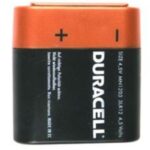The most common methods by which heat transfer takes place are Convection, Conduction, and Radiation. The majority of heat transfers consist of two or maybe three of these methods, wherein its uncommon to find a natural transfer of heat that consists of only one of these methods.
Convection
Gases and liquids are referred to in the world of physics as fluids, in that they both can consistently shift and flow through space in a similar manner. There is a natural random motion, known as Brownian motion, that effectively diffuses energy or heat from particle to neighboring particle. When a large scale current of particle motion moves throughout a fluid, heat is transferred from particle to particle, resulting in an overall shift of heat from one system to another. This process, known as advection, is more theoretically evident in convection, but it also takes place in the process of conduction. There are two different major types of convection; one being forced and the other being natural. Forced convection is a type of heat transfer that takes place without the aid of natural buoyancy forces, and occurs with the aid of some type of current producing force such as that of a fan. Natural convection occurs when a heat source induces changes in the systems density, resulting in an instability that causes relatively larger masses to fall, and the respective smaller masses to rise.
Conduction
Probably the easiest to imagine, conduction is the form of heat transfer wherein two systems are touching each other, resulting in a direct transfer of heat in order to establish equilibrium. Two systems with different temperatures, and thereby different entropies, react to establish a point wherein the entropy of the final system is the same or greater than the two initial systems combined. With that said, the system with the greater temperature will naturally transfer its heat to the system with the lower temperature in an attempt to establish a temperature equilibrium between the two. One example is that of a thermometer and how it accurately measures temperature. It does not independently measure the temperature, but rather establishes an equilibrium between the system and it. Since most thermometers consist of good conductors, or objects that transfer energy and heat relatively quickly, the thermometer is very close to the initial temperature of the system but never precise. Conduction can take place between fluids due to the dispersion of molecules random motion, but it lacks any significant diffusion and does not consist of the bulk current flow of one system to another.
Thermal Radiation
Objects can cause heat transfer without a medium, wherein the heat is transferred via electromagnetic waves. Thermal radiation takes place when the temperature of a system is great enough to cause the electrons and protons in the system to become charged to the point where they release energy in the form electromagnetic waves. Electrons are the main source of this type of heat transfer, as they start to become dislodged from their energy levels when the temperature rises considerably, causing them to suddenly jump to higher energy levels, and then return to their original state. The result of this photoelectric effect is in the form of quanta, or packets of energy in the form of electromagnetic waves, wherein that energy can radiate in all directions from the system. When the temperature of the system increases, so does its main frequency or color, explaining why objects change color starting from lower frequencies like that of red, to greater frequencies like that of blue.



